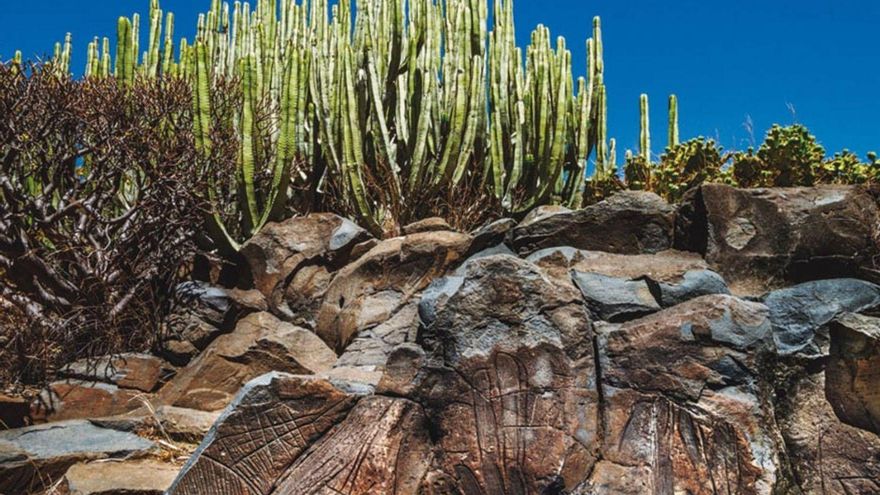
At the top of Montaña de Ifara there is a pastoral site with archaeological surface material – lithic fragments of basalt and obsidian – and some ceramic remains, while in the vicinity there is a small station of cups and channels, which responds to the characteristic typology of these rock manifestations. This points to the BIC declaration file of Los Llanos de Ifara. He adds that in the eastern sector, between the slopes of the volcanic building of Ifara and the Tagoro ravine, several irregularly distributed deposits are distributed.
The most valuable deposit is located on a gently topography ridge –in the place known as Las Rosas–, occupying an area of 400 square meters and made up of a set of dry stone structures, possibly cabins (six in number), reused in historical times. Some of them have dividing walls, showing an immense amount of aboriginal material (lithic, ceramic, malacofauna, etc.) distributed over its entire surface. The site is completed with 38 panels with rock engravings, which are integrated into the walls and walls of some constructions or in natural rocky outcrops. The predominant execution technique is incision, with abrasion, pitting and scratching being more rare. The motifs represented are classified into two large groups: linear geometric and geometric oval and rectangular trend.
The BIC declaration will theoretically allow reinforcing the conservation of the entire space. The proposed delimitation for this archaeological zone is in fact due to the need to establish a scope of protection that guarantees the conservation of the different archaeological sites and elements of ethnographic interest that they house. As they are cave enclaves that range from the prehistoric period to dates after the conquest, “it is essential to keep the natural environment of the sites intact, not only to achieve a visual perception, but to preserve the physical-natural environment in whose context it was occupied. the territory “, says the file.
In the surroundings of the Montaña de los Riscos, more remains are documented, among which the pastoral stops at the top of said volcanic cone and that are repeated on the southern slope of the building. In this area you can also see a set of reused dry stone huts, with associated aboriginal material. On the slopes of the mountain there is a group of excavated caves equipped with outer enclosure walls.
In the upper area of the Llano de Ifara there are also two deposits: the first corresponds to a dry stone structure – cabin type – with abundant archaeological material associated, while the second consists of a bowl of rectangular morphology with a drainage channel carved in the tuff. Some caves were occupied as quarters for day laborers who worked on the tomato farms until the 1970s.















